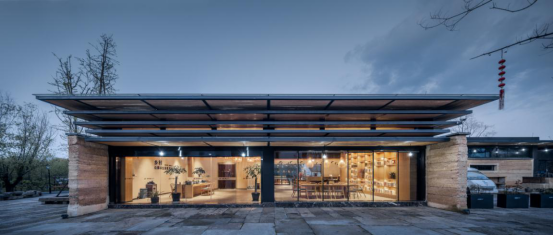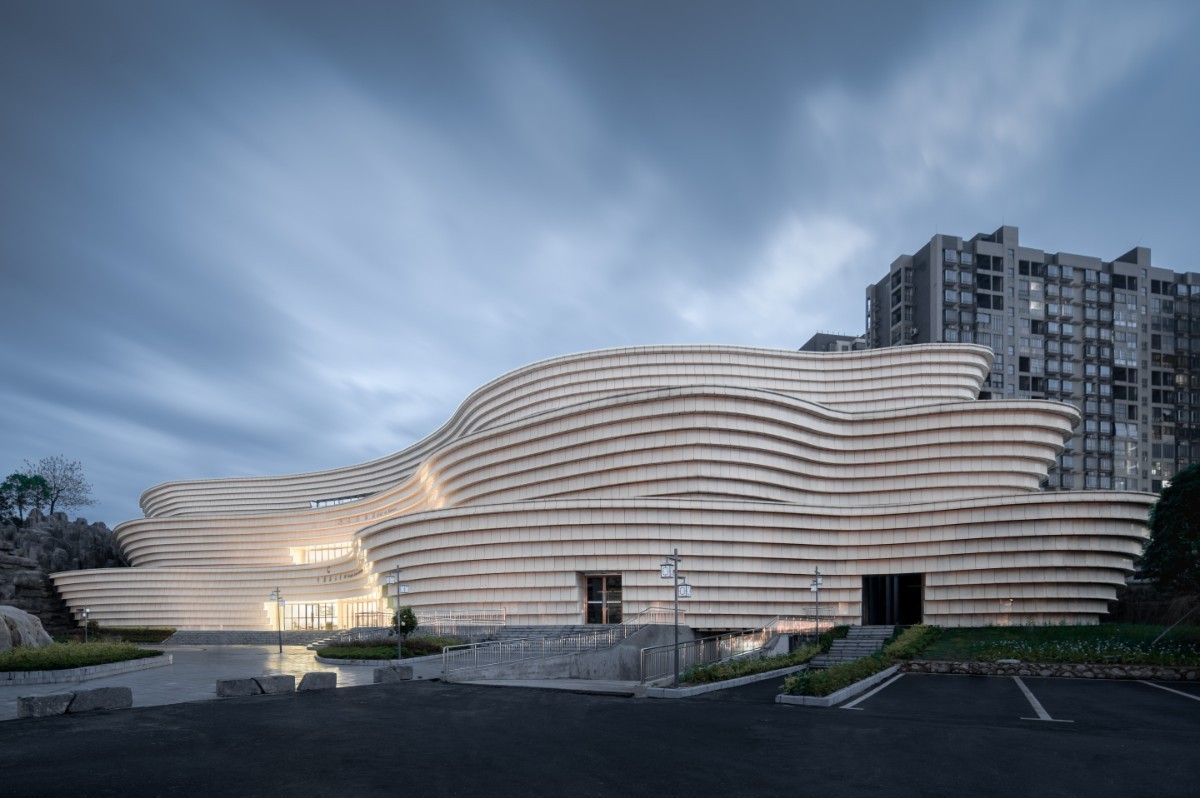


我院于2020年6月27日荣获第三十四界世界建筑奖(WORLD ARCHITECTURE AWARD)。经过来自国际专家评审团以及往届得奖获胜者投票得出10个winner项目,我院杜春宇团队的‘安吉乡村文化礼堂小村客厅’项目以及‘灵渠展示中心’项目在来自27个不同国家不同项目中脱颖而出,有幸荣膺十个建筑类已建成winner项目之二。
关于世界建筑奖
World Architecture Award
自2006年以来,世界建筑界举办了30多届世界建筑界大奖(WA大奖)。WA奖强调并认可那些有潜力激发关于当代建筑话语的令人兴奋的问题的杰出项目。历年来也有各国的优秀项目及设计师在世界建筑奖评选中崭露头角,例如zaha hadid事务所的作品大兴机场、梅溪湖国际文化中心等。
Since 2006 and for over 30 Cycles, World Architecture Community organizes the prestigious and acclaimed World Architecture Community Awards (WA Awards). The WA Awards highlights and recognizes remarkable projects that have the potential to inspire exciting questions about contemporary architectural discourse.
鉴于世界建筑社区的国际性,来自全球的,特别是来自一般或专业媒体较少报道的地区的参与者,有机会分享和推广他们的项目。
Given the International nature of World Architecture Community, participants from around the Globe and in particular from regions less covered by general or specialised media, get a chance to share and promote their projects, which would otherwise go unnoticed.
在设计中体现和激发对建筑艺术的承诺的新颖性、原创性和创造力是主要的标准(NOVELTY, ORIGINALITY and CREATIVITY)。世界建筑界试图弥合理论与实践之间的鸿沟;因此,建筑师在项目描述部分的解释对于识别和设计本身都是至关重要的。
获奖项目介绍
Award-winning Projects
▽安吉乡村文化礼堂“小村客厅”
Rural Culture Hall "Parlor of the Village"


‘小村客厅’的概念起于乡村文化和现代生活理念的融合和重建,乡村建筑的作用更趋向于地域性的、社区文化性的记忆场所,所以新颖的建筑构建方式和空间传递的非物质形态(情感、文化、精神)缺一不可。“新旧结合”的理念被运用于建筑材料之中,大部分采用从当地的传统材料,设计师原本考虑打造全竹制建筑因防腐、耐久性的原因转而采用传统瓦片和竹材通过疏密有致的组合排布打造遮风挡雨遮阳的屋顶,造型波荡起伏意如江南水乡远山如黛、烟波浩渺;当地农民在旧时烧制夯土加以麦秸、竹面使之更加坚固、耐用,于是设计师沿用相同工艺的夯土材料穿透时间壁垒使历史岁月感与农耕文化山鸣谷应;垒砌拼接的毛石墙、河边的卵石、以及地面的青条石完全就地取材来达到返璞归真却错落有序的淳朴景观。竹制折窗和玻璃幕墙与外广场和水系形成平衡中灵活随意的“模糊空间”,这种相对广而混沌、并非四面皆墙皆柱的空间体态反而让人能感受和自然、流水、绿意千丝万缕的对话关系。 廊内朗朗欢声笑语,屋外潺潺流水。活动中心外的延伸空间,垒石围绕的树木给村民夏日乘凉、活动闲聊最惬意的一隅。
The concept of “Parlor of the Village” originates from the fusion and rebuilding of village culture and modern lifestyles. Village building is a place where memories of that region and culture of that community are stored, which makes both novel building construction ways and the intangible form of spaces (emotion, culture and spirit) indispensable.The concept of “combining the new and the old”is embodied in the choice of building materials. Most of the materials are traditional local materials. The designers wanted to build the hall solely with bamboos at first, but in consideration of anticorrosion and durability, they settled on traditional tiles and bamboo materials. By exquisitely combining them, they create a roof that keeps out wind, rain and sunlight. Looking similar to waves, the roof presents the beauty of Jiangnan water villages: there are lush mountains in the distance and fogs rise from the water. Back then, when farmers were making rammed earth, they would add wheat straws and bamboos into it to make it tougher and more durable. Using the same technique, the designers manage to break through the barrier of time, making the long history harmonize with the farming culture. Rubble walls, pebbles by the riverside and the green stones on the ground. All the materials are obtained locally so as to create a rustic landscape that is pristine but orderly. The bamboo window, the glass wall, the square outside and the water form an “ambiguous space”that is both balanced and flexible. Standing in such a space that is spacious but chaotic because it is not enclosed by walls or columns, people can communicate with nature, with water and with the green. Laughter come from the corridor and water flows outside the house. In the extended space of the activity center, trees that are surrounded by stones can shade villagers in summer. This is a corner where they can play, chat and relax themselves.
▽兴安灵渠展示中心
XingAn LingQu Exhibition Center


兴安灵渠展示中心,坐落于拥有世界上最古老的运河灵渠的“湘桂走廊”要冲—兴安。作为中原汉文化和岭南百越文化地交汇之地,联结东南亚一带一路海上丝绸之路的节点,将此地历史文化借助现代之力源远流长。在设计主题上,兴安县承载着独一无二的、地域性的岭南与汉文化交融的积淀;灵渠的历史地位不言而喻, 以形象化的语言,更能让人感受历史与现代的空间交叉与流动;对于兴安来说是一个开放的地标,更具有加强该城市文化目的地的国际与历史意义。
Lingqu Exhibition center is located in Xingan, where there is Lingqu Canal, which is the most ancient canal in the world and is titled “The Corridor That Connects Hunan and Yunnan”. As the intersection of Han culture in Central Plains and Baiyue culture in Lingnan region as well as a node in Marine Silk Road in Southeast Asia, it boasts a long history and splendid culture, which are spread farther with the help of modern technologies. For the design theme, we blends together the unique and regional Lingnan culture and Han culture, which makes the historical significance of Lingqu canal self-evident. The dynamic smooth linear-shape make it easier for people to sense the overlap and flow of historical and modern spaces. Lingqu Exhibition center to Xingan is more than an open landmark but is also of international and historical significance in strengthening the city’s role as a cultural destination.
